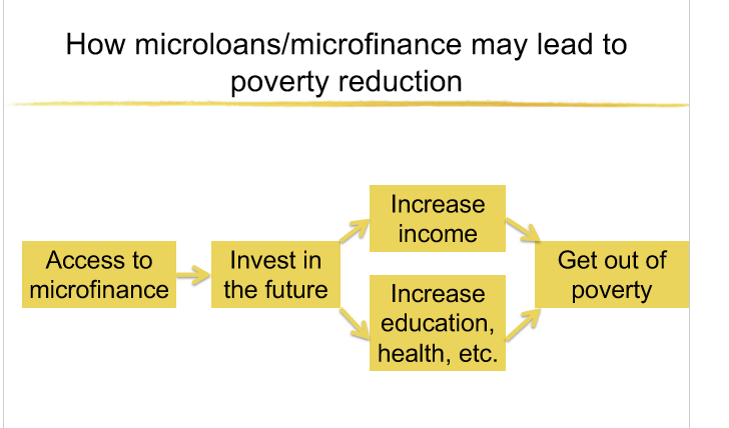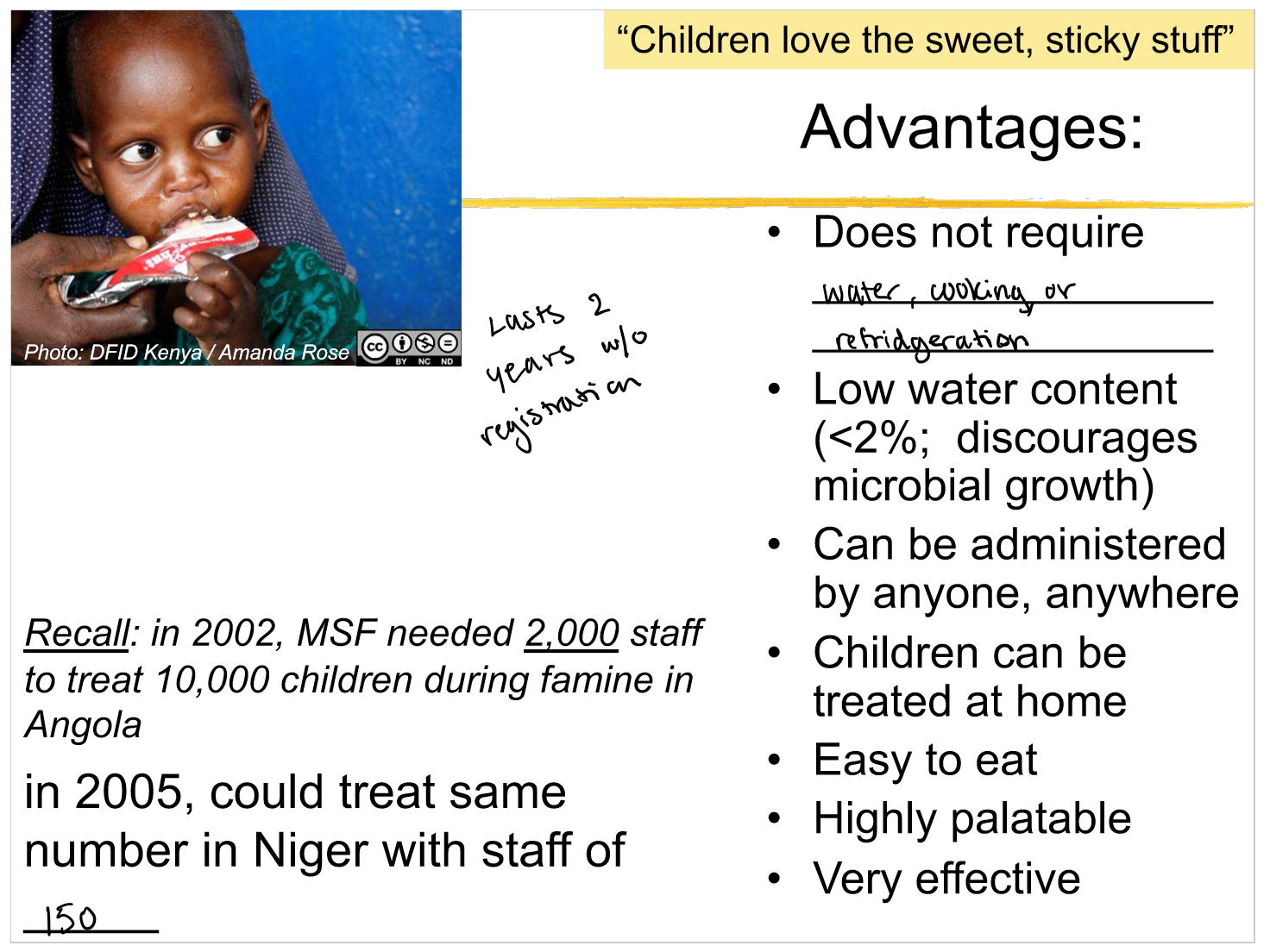asynchronous 12: Microcredit &Ready-to-Use Therapeutic Food (RUTF)
1/5
There's no tags or description
Looks like no tags are added yet.
Name | Mastery | Learn | Test | Matching | Spaced |
|---|
No study sessions yet.
6 Terms
Indicate how microfinance (including microcredit)
could alleviate poverty and improve food security
small loans given to people in poverty in remote areas
enable people to invest in their small business, increase income and family’s living standards
increasing access to other services, training
improves meal QUALITY
increase meat and fish consumption
improvements observed if microcredit client was FEMALE

Describe the Grameen Bank (founded by
Muhammad Yunus in Bangladesh)
allows poor to bank with no collateral, full guarantee, no lawyers
mostly used by women for small businesses, hiring employees, more sewing machines
$100 million monthy lent out
higher education for students
Give specific examples of how the impact of
microcredit has been assessed – and what can be
learned from those evaluations
we need to understand when these strategies can be used and who can use it
studies in suh saharan africa
some poorer from microfinance → suggest to target entrepreneurs rather than unexperienced
positive on saving, mixed on income
negatively impact clients childrens education
describe RUTF, their development, and their impact on the treatment of severe acute malnutrition
sache plumpy nut
oil, sugar, milk powder, peanut butter
lasts on shelf
easier to use because administered at home rather than the milk used in clinic
89% children with SAM recovered, no signs of allergy
identify and evaluate strengths and limitations of RUTF’s
limitations:
no evaluation of the vitamin and mineral status of children is done at the end of treatment
reliance on dairy is expensive and less sustainable, could other formulations work?
effects on mortality and relapse unknown

consider ethical and practical questions about the use of RUTF and identify useful directions future research
need a greater measurement of functional outcomes: learning, development, physical growth, etc